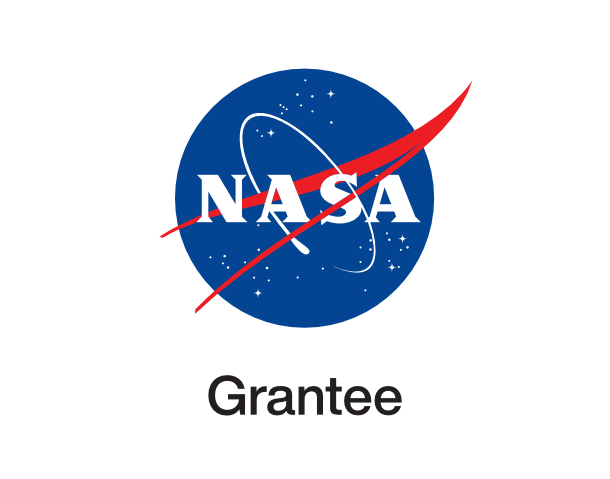Supernova Remnant E0102 in the Small Magellanic Cloud

stsci_2006-35a July 31st, 2006
Credit: NASA, ESA, and the Hubble Heritage Team (STScI/AURA) Acknowledgment: J. Green (University of Colorado, Boulder)
Reminiscent of a U.S. July 4 Independence Day celebration, here is a NASA Hubble Space Telescope image of a cosmic explosion that is quite similar to fireworks on Earth. In the nearby galaxy, the Small Magellanic Cloud, a massive star has exploded as a supernova, and begun to dissipate its interior into a spectacular display of colorful filaments. The supernova remnant (SNR), known as "E0102" for short, is the greenish-blue shell of debris just below the center of the Hubble image. Its name is derived from its cataloged placement (or coordinates) in the celestial sphere. More formally known as 1E0102.2-7219, it is located almost 50 light-years away from the edge of the massive star-forming region, N 76, also known as Henize 1956 in the Small Magellanic Cloud. This delicate structure, glowing a multitude of lavenders and peach hues, resides in the upper right of the image. Determined to be only about 2,000 years old, E0102 is relatively young on astronomical scales and is just beginning its interactions with the nearby interstellar medium. Young supernova remnants like E0102 allow astronomers to examine material from the cores of massive stars directly. This in turn gives insight on how stars form, their composition, and the chemical enrichment of the surrounding area. As well, young remnants are a great learning tool to better understand the physics of supernova explosions. E0102 was observed in 2003 with the Hubble Advanced Camera for Surveys. Four filters that isolate light from blue, visible, and infrared wavelengths and hydrogen emission were combined with oxygen emission images of the SNR taken with the Wide Field Planetary Camera 2 in 1995. The Small Magellanic Cloud is a nearby dwarf galaxy to our own Milky Way. It is visible in the Southern Hemisphere, in the direction of the constellation Tucana, and lies roughly 210,000 light-years distant.
Provider: Space Telescope Science Institute
Image Source: https://hubblesite.org/contents/news-releases/2006/news-2006-35
Curator: STScI, Baltimore, MD, USA
Image Use Policy: http://hubblesite.org/copyright/

- ID
- 2006-35a
- Subject Category
- C.5.1.6 C.4.2.1 C.4.1.4
- Subject Name
- E0102, 1E0102.2-7219
- Credits
- NASA, ESA, and the Hubble Heritage Team (STScI/AURA) Acknowledgment: J. Green (University of Colorado, Boulder)
- Release Date
- 2006-07-31T00:00:00
- Lightyears
- 210,000
- Redshift
- 210,000
- Reference Url
- https://hubblesite.org/contents/news-releases/2006/news-2006-35
- Type
- Observation
- Image Quality
- Good
- Distance Notes
- The distance to the SMC is roughly 210,000 light-years (64 kiloparsecs).
- Facility
- Hubble, Hubble, Hubble, Hubble, Hubble
- Instrument
- ACS, WFPC2, ACS, ACS, ACS
- Color Assignment
- Blue, Green, Green, Orange, Red
- Band
- Optical, Optical, Optical, Optical, Optical
- Bandpass
- B, [O III], V, Halpha, i
- Central Wavelength
- 475, 502, 550, 658, 775
- Start Time
- 2003-10-15T00:00:00, 1995-07-04T00:00:00, 2003-10-15T00:00:00, 2003-10-15T00:00:00, 2003-10-15T00:00:00
- Integration Time
- Dataset ID
- Notes
- O
- Coordinate Frame
- FK5
- Equinox
- 2000.0
- Reference Value
- 269.7316315969999891, -29.1812914174999989
- Reference Dimension
- 3724.0000000000000000, 1864.0000000000000000
- Reference Pixel
- 497.7501850130000207, 1253.7331161499998871
- Scale
- -0.0000134368330079, 0.0000134368330079
- Rotation
- 88.8898664852893035
- Coordinate System Projection:
- TAN
- Quality
- Full
- FITS Header
- Notes
- Creator (Curator)
- STScI
- URL
- http://hubblesite.org
- Name
- Space Telescope Science Institute Office of Public Outreach
- outreach@stsci.edu
- Telephone
- 410-338-4444
- Address
- 3700 San Martin Drive
- City
- Baltimore
- State/Province
- MD
- Postal Code
- 21218
- Country
- USA
- Rights
- http://hubblesite.org/copyright/
- Publisher
- STScI
- Publisher ID
- stsci
- Resource ID
- STSCI-H-p0635a-f-3609x2891.tif
- Resource URL
- https://mast.stsci.edu/api/latest/Download/file?uri=mast:OPO/product/STSCI-H-p0635a-f-3609x2891.tif
- Related Resources
- http://hubblesite.org/newscenter/archive/releases/2006/35
- Metadata Date
- 2022-07-06T00:00:00
- Metadata Version
- 1.2
Detailed color mapping information coming soon...

















